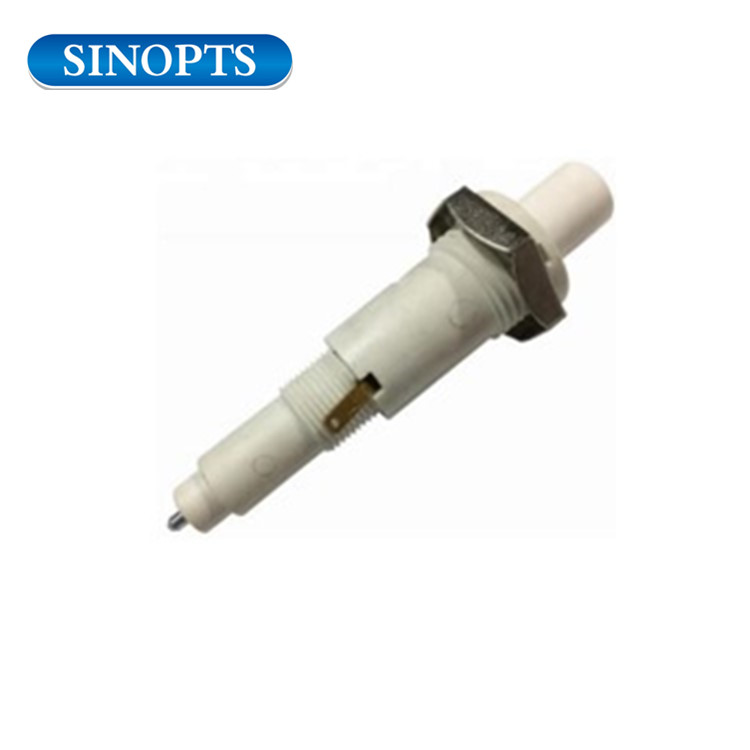
The layer was solidified at 80 ☌ for 2 h. Three different epoxy resins were employed as encapsulating resins, including Araldite 2020 (Huntsman Corp., Everberg, Belgium), DP 460 (3M Corp., Saint Paul, MN, USA), and DP 490 (3M Corp., Cergy-Pontoise, France) resins. Subsequently, the groove was filled with epoxy resin to form the composite layer. After sintering, PZT ceramic sheets formed the arrays with a fiber spacing of 80 μm, while the width of fiber was 250 μm. The PZT green body was dried in air at 80 ☌ for four days, which was later sintered at 1200–1300 ☌. PZT-5A presintered powder (Zibo Yuhai Electronic Ceramic Co., Ltd, Zibo, China), solvent, and plasticizer were uniformly mixed to prepare the PZT green body with good flatness. The PZT ceramics were prepared by viscous plastic processing. The effect of environmental temperature on the PFC was also discussed.
Piezoelectric button free#
The free strain of PFC and the tip displacement of cantilever actuated by PFC were detected. The effects of epoxy resin properties on the electrical and piezoelectric properties of PFC were studied. In this paper, three typical epoxy resins were applied in the fabrication of PFC. Until now, the effects of viscosity and rigidity of the epoxy resin on PFC’s performance have not been reported. The ceramic/epoxy-resin composites with 1-3 and 2-2 structures have also been reported and they showed excellent performance. made a piezoelectric glass fiber reinforced polymer for an impact sensor using the conventional autoclave moulding method, and the ratio of PNN-PZT powder to epoxy resin was 1:10. Besides PFCs, the epoxy resins have been widely employed in various piezoelectric composites. Although the resin with high dielectric constant could significantly improve the driving performance of the composite, high dielectric constant resins, such as polyvinylidene fluoride (PVDF), were not often used as the packaging materials for piezoelectric fiber composites because of their weak adhesion property. demonstrated that increasing the dielectric constant of the epoxy resin would significantly increase the driving ability of the piezoelectric fiber composite. Meanwhile, a very thin layer of resin functioning as the bonding layer between piezoelectric fiber and the electrode could weaken the effective electric field intensity that is applied on the piezoelectric fiber.

found that viscosity was an important cure-dependent property in controlling the curing reaction of the resin in the cure cycle design of epoxy resin.

mentioned that the viscosity of the polymer matrix was a key property during the production of composites by injection technologies. Viscosity is also an important parameter for epoxy and it prominently affected the adhesive property of the composites. The rigidity of epoxy resin could affect the performance of the composites.

Piezoelectric button crack#
In general, the resin should fill in the gaps between the fibers, and after curing, the resin is able to transmit the stress and prevent the propagation of cracks when the crack is about to generate.

Epoxy resin therefore plays an important role in the PFC. Piezoceramics are easy to break and they have poor fatigue resistance due to the brittleness. PFCs exhibit good flexibility and large deformation capability after the piezoelectric fibers, and polyimide films with interdigital electrodes are laminated and composited by epoxy resin. As one of the important smart materials, piezoelectric fiber composites (PFC) have shown excellent performance in the areas of vibration control, deformation control, structural health monitoring and energy harvesting.


 0 kommentar(er)
0 kommentar(er)
